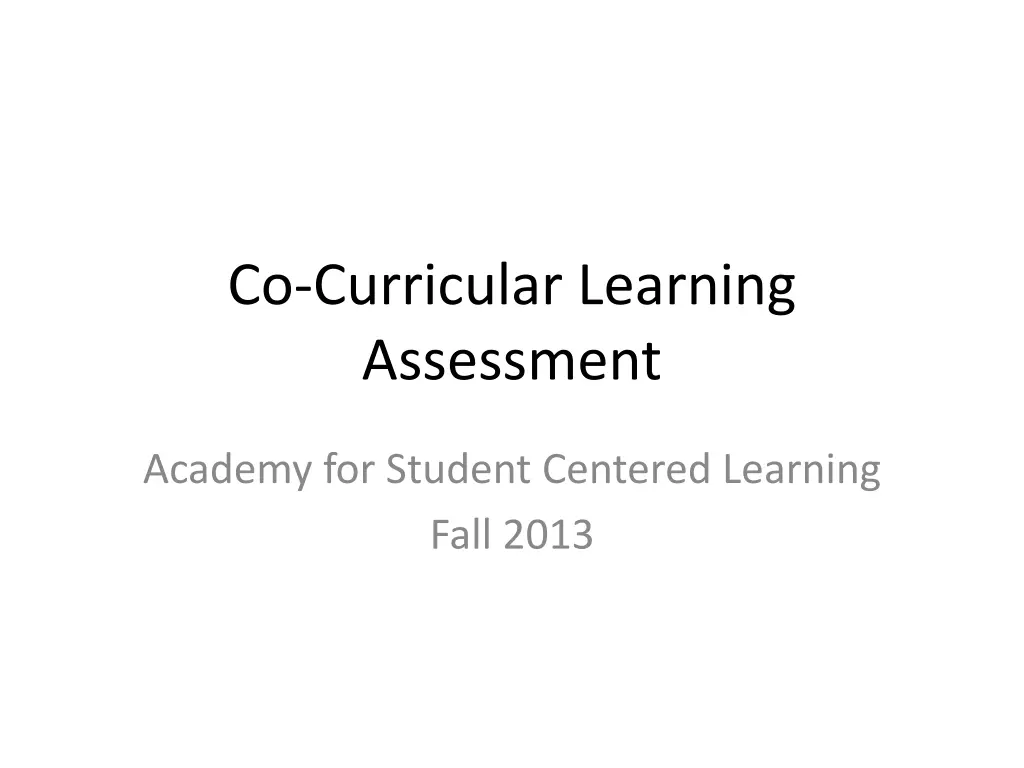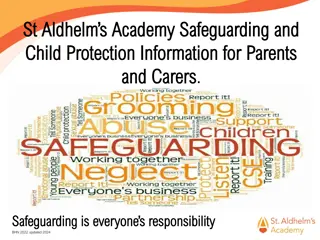
Enhancing Student Learning through Co-Curricular Assessment and Integrated Environment
Explore the importance of co-curricular learning and assessment in student development, focusing on shifting perspectives from teaching to learning. Discover how an integrated learning environment fosters holistic student growth and civic responsibility.
Download Presentation

Please find below an Image/Link to download the presentation.
The content on the website is provided AS IS for your information and personal use only. It may not be sold, licensed, or shared on other websites without obtaining consent from the author. If you encounter any issues during the download, it is possible that the publisher has removed the file from their server.
You are allowed to download the files provided on this website for personal or commercial use, subject to the condition that they are used lawfully. All files are the property of their respective owners.
The content on the website is provided AS IS for your information and personal use only. It may not be sold, licensed, or shared on other websites without obtaining consent from the author.
E N D
Presentation Transcript
Co-Curricular Learning Assessment Academy for Student Centered Learning Fall 2013
Co-Curricular Learning Includes both formal and informal out-of-class learning opportunities that contribute to the professional and personal growth of students.
Two Guiding Assumptions We should focus on student learning rather than teaching in order to improve students college experiences. (Huba & Freed, 2000, p. 3) Learning is a complex, holistic, multi-centric activity that occurs throughout and across the college experience. (Learning Reconsidered, 2004, p. 5)
Traditional Assessment Learning outcomes need to be aligned at course, program, and institutional levels But where are many general education goals, like leadership and teamwork and the ability to function in an increasingly diverse world taught and assessed? Can you teach this?
Shifting Perspectives What happens when we shift our emphasis from teaching to learning? Responsibility for learning can be understood and shared. Emphasis on student demonstration, not topic- covering. Ability to do or apply supersedes knowing. Sites of learning become less specific, and boundaries become more flexible. All interactions and activities can be conceived as learning experiences related to institutional or program outcomes.
Integrated Learning Environment Students learn across all domains of their lives and do not make distinctions about their learning based on their setting.
Integrated learning speaks to the whole student (discipline, general education, co-curricular) (academic content, student development, identity formation)
Integrated Points of Learning Civic Responsibility AA: Service learning SA: Student government, voter registration, student judicial boards Think and Engage as a Global Citizen AA: Business, Psychology, Sociology SA: International experiences, diversity programs, residence halls
IDENTIFY POINTS OF LEARNING
Gathering Evidence Challenging as students are often one-stop shoppers in co-curricular activities Not serving a consistent group of students How to assess transient student population for anything but satisfaction of services?
Assessment Plan Identifying student learning outcomes, helps professionals see how functions contribute in curriculum development LGBT Center wants to move from offering a variety of workshops and speakers on several topics to a curriculum-driven model that focuses on particular LGBT identity development outcomes.
Recasting Services Assessment plan helps program staff reflect on what it is they want to accomplish and the best way to achieve outcomes. Repackaging or recasting services moves from focusing on satisfaction to student learning and development.
CAS Standards Standards for 40 functional areas Thirteen component parts: Mission Program Leadership Organization and management Human resources Financial resources Facilities, technology, and equipment Legal responsibilities Equity and access Campus and community relations Diversity Ethics Assessment and evaluation






















